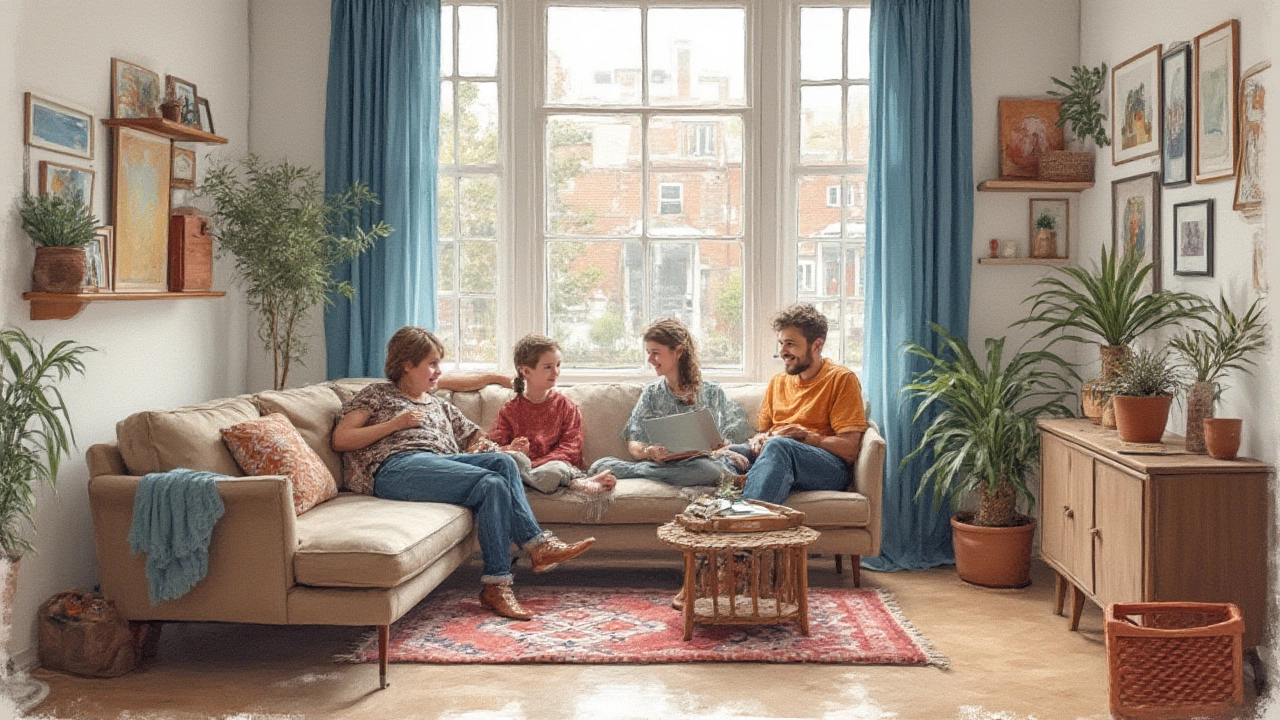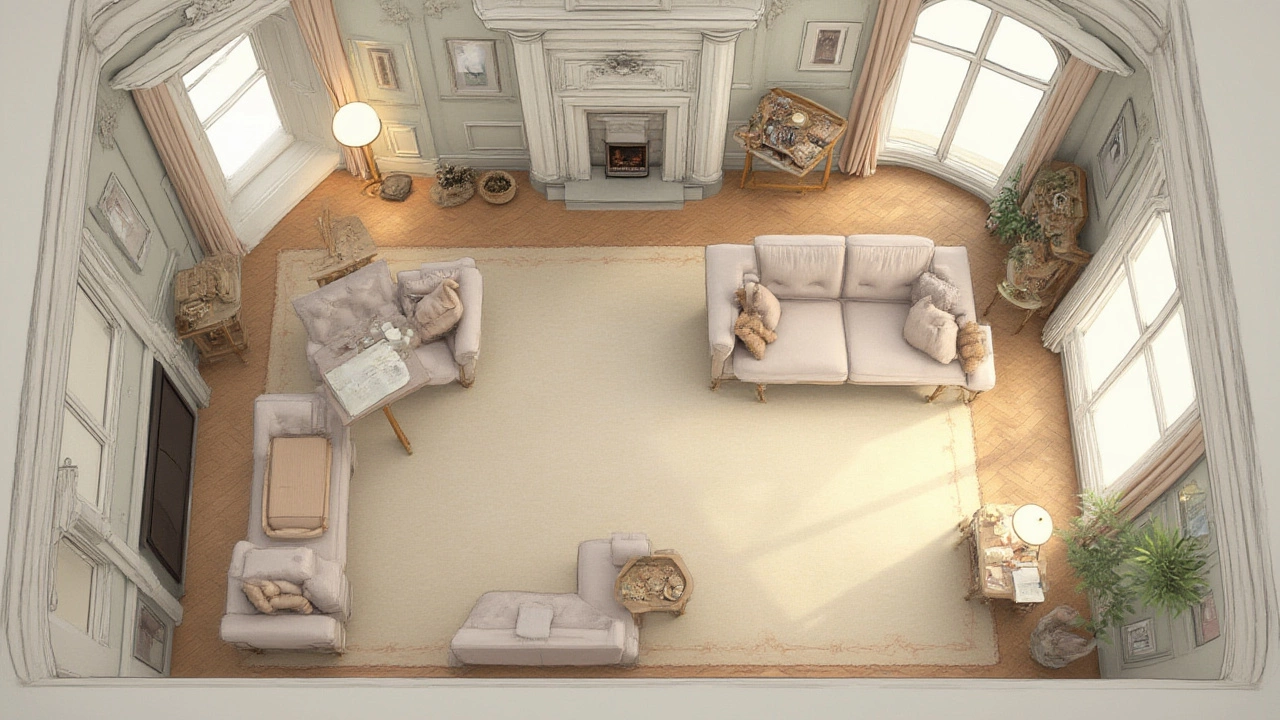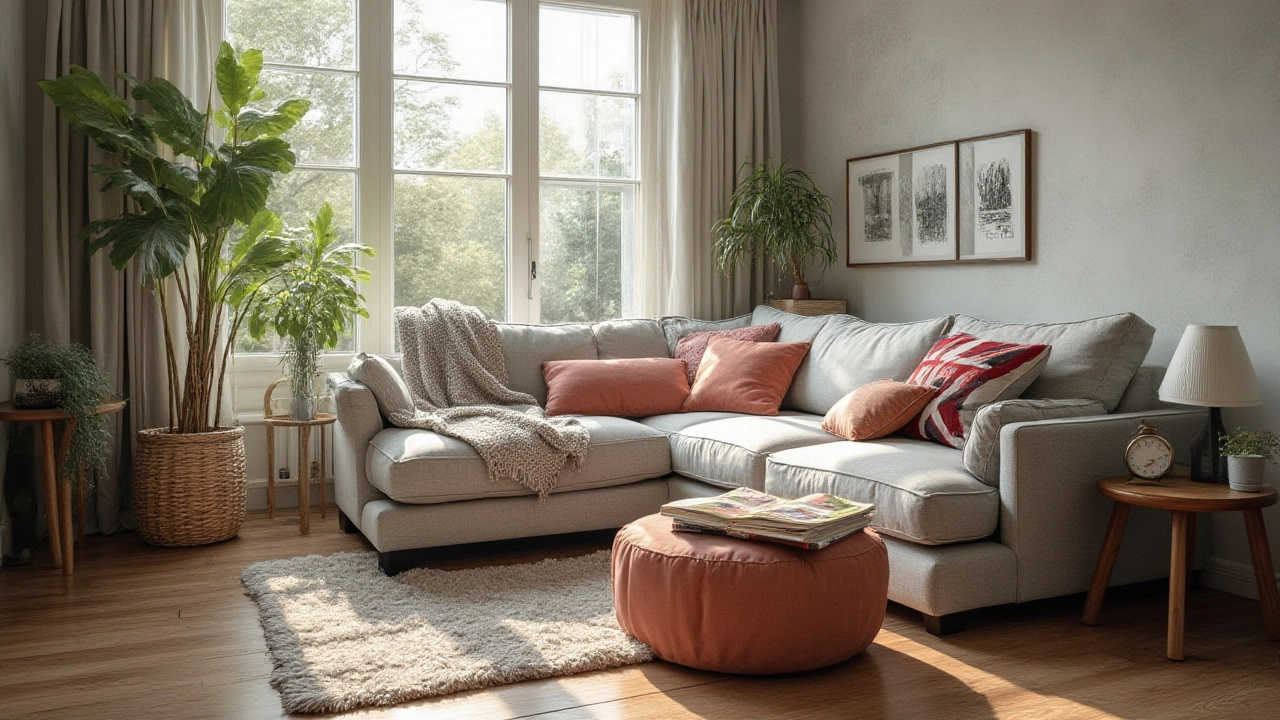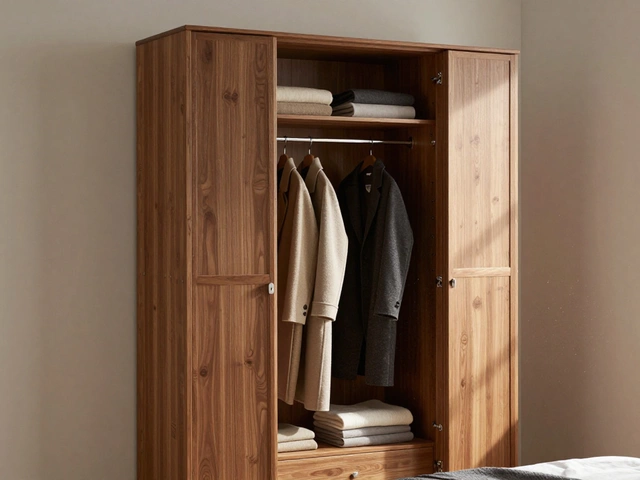Most people get their hands on a corner sofa without ever really thinking about where it’s actually going to live. It’s only when you cart the thing home that you realize the wrong placement can make your living room feel more like an obstacle course than a haven. Odd gaps, weird shadows, blocked walkways—yep, I’ve been there too. But a corner sofa, used right, can actually pull the whole space together. It transforms your living room from a dull box into an inviting hangout spot that feels collected, cozy, and actually, kind of grown up. The trick is knowing your options and thinking a few steps ahead. Good news? You don’t need to tear down walls or buy new furniture. A few tweaks and honest measurements are all it takes.
Understanding Your Space and Sofa
Before you even think about arranging, it’s time to be brutally honest about your living room. Grab a tape measure (yes, really). Jot down the actual dimensions—not what you think fits, but what you’ve got to work with. Even a few inches here or there can mean the difference between living-room bliss and stubbed toes for weeks. It sounds obvious, but you’d be shocked how many folks skip this and end up rearranging for hours.
If your room is a perfect rectangle, you’ve got more obvious choices, but open-plan layouts or spaces with strange nooks need more strategy. Consider windows, radiators, doors, and anything immobile. A 2023 study by the *Canadian Home Design Institute* showed that the average North American living room measures between 12 by 18 feet, but condos in Mississauga (where I live) average closer to 10 by 14 feet. That’s tight. Sectionals can run anywhere from 8 feet to over 10 feet on each side, so leaving room to walk behind or in front is crucial.
Take a hard look at your sofa style, too. Some sectionals have chaises or curves; others are straight and sharp. Do you want the longer ‘arm’ of the L-shape to be on the right or the left? Most modern corner sofas are modular and let you switch this up. If it’s not modular, double-check which side works best before dragging anything around. Natural light can completely change how your sofa looks—make sure the fabric colors (especially grays and creams) work with your windows’ light levels.
Don’t forget the TV—unless you’re one of those rare people who actually turns it off. According to Statista, about 95% of Canadian households own a TV as of late 2024, so if you’re like most, aim for a direct or slightly angled view. Glare from windows is a common complaint, so think about your sofa placement and line of sight before settling in. Floor outlets, heating vents, and even WiFi router location should land in your checklist—not just aesthetics. It’s the details that either make your space feel seamless or leave you fishing for extension cords.

Corner Sofa Placement Strategies That Work
Now, let’s cut to the fun part: possible placement ideas. First up, the classic—nestling your sofa right into the corner of the room. It just feels natural, and it frees up the rest of the living space for other furniture or traffic. Perfect for smaller rooms or apartments, this option gives off a real sense of snug comfort. Add a floor lamp behind the sofa or a couple of floating shelves above, and you gain stylish storage and lighting, no clutter required.
The “floating” technique is a bold move, but it works brilliantly in open-concept rooms. Instead of pushing your corner sofa against a wall, angle the back towards the center—maybe to act as a subtle divider between your living area and dining nook. This creates zones without closing anything off. Interior designers love this because, according to 2024 Houzz Canada trend reports, open plans are here to stay, but people want more definition. Want a reading corner or home workspace tucked behind? Drop in a narrow console table behind your sectional for coffee mugs, books, or even a stash of remote controls.
U-shaped layouts are making waves too. If you pair your L-shaped sofa with a matching ottoman or extra chair on the third “side,” you can set up the ultimate gathering zone for movie nights or game sessions. Family with teens? This is about as close as you’ll get to everyone hanging out in one spot. Just watch for tight pathways—leave at least 30 inches for walking room, so people aren’t tripping over furniture or each other.
A surprisingly instinctive but overlooked strategy: angle the sofa itself. Slightly turning your sectional—not quite parallel to the walls—draws the eye and feels more relaxed. Try it if the shape of your room feels boring, or if you want your *corner sofa* to be the hero. I tried this in my own Mississauga apartment and finally managed to make an otherwise boxy living room feel less predictable. Pair it with an off-center rug or asymmetrical art for that “designer” feel, without the designer bill.
What about windows? Corner sofas under large windows can look magazine-worthy—just make sure you leave enough room to open and close curtains. In smaller rooms, placing the low-back side of your sofa beneath the window keeps sightlines open and maximizes incoming sun. If you have radiators there, allow at least 6 inches for air flow. Floor-to-ceiling glass? Don’t crowd the glass—let at least 12-18 inches breathe to avoid making things feel cramped or blocking light.
A few dos and don’ts worth keeping on your radar:
- Don’t block traffic flow. Always keep main pathways around 30 inches wide.
- Do layer in different textures—think throw blankets or soft pillows—to soften the look if your sofa is big or angular.
- Don’t cram side tables on each end unless you genuinely use them. One or two well-placed surfaces are usually enough.
- Do experiment with layouts before making any decisions. There are free room-planning apps (like Roomstyler or MagicPlan) that let you test arrangements with real measurements.
- Don’t forget to check for cable boxes, game consoles, or stereo setups if your TV is a focus. Hide cords with smart furniture or cable covers for a neater look.
Check out this table for some quick-reference spacing guidelines—no guesswork needed:
| Element | Recommended Distance |
|---|---|
| Sofa to coffee table | 14-18 inches |
| Sofa to TV | At least 7 feet for a 50-inch TV |
| Sofa to wall (behind) | 4-6 inches minimum, 30" for walking |
| Sofa to window | 12-18 inches (if possible) |

Personal Style and Mood: Making Your Space Feel Like Home
Placement isn’t just about squeezing in bodies or making room for the dog’s bed. It’s about vibe—what kind of energy do you want when you flop onto your sectional after a long day? The right placement can make your living room feel like a calm sanctuary, a buzzing family hub, or a minimalist chill zone. Don’t settle for “good enough” if your space feels awkward. You’re not just working around walls; you’re creating an everyday retreat, even if you’re in the heart of a bustling city like Mississauga.
If you’re into hosting, anchor your corner sofa as the heart of the room, with a coffee table and ottoman inviting guests to put their feet up and stay a while. This works even better if you’ve got a view—maybe some city skyline or a patch of green out the window. Studies from the National Association of Realtors (2024) found that homes with social seating layouts (sofas centered for group conversation, not just TV viewing) are consistently rated as more "welcoming" on buyer walkthroughs, even by people who never entertain guests.
If calm and coziness are your style, back the sofa up to a wall and fill the corner with oversized plants. Layer up with throws, chunky knits, and soft lighting. Try tucking a small reading lamp or a nesting table for tea or late-night snacks. When the chill of Canadian winters roll in, the corner becomes your warm little fort. If your space gets lots of sun, angle the sofa just enough to catch the best light for Sunday afternoon naps—best kept secret of the homebody crowd.
Minimalist? The corner sofa itself is the statement. Pull it slightly away from the wall for a shadow gap. Keep other furniture light and low-profile so your sectional stands on its own. Wall-mounted lights instead of floor lamps clear up sight lines and make the whole room feel airier. If you’re fighting the “dark bulky sofa” problem, lighten up the rest of your scheme with whitewashed wood, pale rugs, or glass tables. Scandi-inspired or Japandi minimal looks are popular for a reason in small spaces—everything feels uncluttered and purposeful.
Tech lover, gaming fanatic, movie buff? Face your corner sofa right at the entertainment zone, but use a rug to separate it visually from the rest of the room. Wall-mount your TV if possible. If you’re squeezing in a soundbar, plan for outlets and keep shelves or console tables close at hand. Bonus: corner sofas are perfect for hiding surround sound wires behind the backrest or under the chaise leg.
Got kids or pets? Choose performance fabric covers and make sure the open “end” of your sectional points away from the main entry to create a less chaotic vibe. Try a layout that naturally blocks off a corner play area, or gives your furry friend a sunny nap spot without muddying up your main walking path. Storage ottomans double as toy chests and cup holders—trust me, you’ll be grateful by the third episode of whatever show you’re bingeing.
Whatever your personal style, your corner sofa is more than just a seat. It’s the anchor for everything you do in this space. Don’t wait to find “the perfect spot”—try a few placements and actually live with them for a few days each. You’ll be surprised what actually feels right. You might even find yourself using the room more than you ever thought possible. If not, hey, there’s always another episode waiting. The best part is, you don’t need fancy gadgets or a design degree—just a bit of patience, solid measuring, and a willingness to move things around until it finally feels, well, just right.







